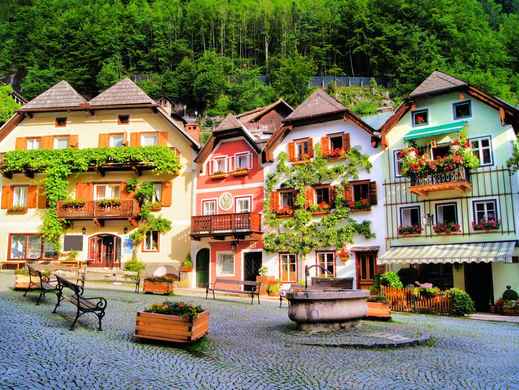


Vorarlberg
Europe
/
Austria
/
Vorarlberg
Tucked away in the westernmost corner of Austria, Vorarlberg is a hidden gem that offers a unique blend of stunning natural beauty, rich cultural heritage, and a laidback lifestyle. Nestled in the Alps, this region boasts a diverse landscape, from the snow-capped peaks of the Silvretta and Verwall mountain ranges to the rolling hills and crystal-clear lakes that dot the valleys. With a temperate climate, Vorarlberg is a year-round destination, offering outdoor adventures in every season.
Vorarlberg's culture is deeply rooted in its history, with influences from its proximity to Switzerland and Germany. The locals take pride in their traditional craftsmanship, which is evident in the region's architecture, furniture design, and culinary scene. Vorarlberg is renowned for its Bauhaus-inspired architecture, blending modern design with traditional Alpine elements, creating a harmonious and sustainable living environment.
What truly sets Vorarlberg apart is its emphasis on sustainability and eco-friendly practices. From the use of locally sourced materials in construction to the preservation of natural landscapes, this region is a pioneer in environmentally conscious living. The culinary scene celebrates locally grown produce, with a focus on organic farming and traditional recipes handed down through generations. Signature dishes include the beloved Käsespätzle (cheese spaetzle), Vorarlberger Hauswurst (a smoked sausage), and the decadent Vorarlberger Milchrahmstrudel (a milk cream strudel).
For nature enthusiasts, Vorarlberg offers a wealth of activities, from hiking and skiing in the Alps to lake swimming and cycling through picturesque villages. The Vorarlberg Rheintal, a stunning valley carved by the Rhine River, is a must-visit destination, showcasing the region's natural beauty and rich history. The charming city of Bregenz, with its historic old town and the iconic Bregenz Festival, is a cultural hub that should not be missed.

Get to Know Vorarlberg
Take a tour of this destination's highlights
Popular Areas in Vorarlberg

Travel Tips for Vorarlberg
What you need to know before traveling here
Getting Around Vorarlberg
A guide to Vorarlberg's local transportation
Vorarlberg does not have a metro system, but its efficient public transportation network makes it easy to explore the region.
Practical Tips for Vorarlberg
Things to prepare and best way to visit
The official currency in Vorarlberg, as well as the rest of Austria, is the Euro (€).
Several bus and train services connect the airports in Zurich, Switzerland, and Munich, Germany, to Vorarlberg. Many hotels also offer airport shuttle services, which can be arranged in advance.
While Vorarlberg's cuisine is heavily influenced by meat and dairy products, there are still options for vegetarians and vegans. Many restaurants offer vegetarian dishes, and larger towns like Bregenz and Dornbirn have dedicated vegetarian and vegan eateries.
Vorarlberg is a year-round destination, offering different experiences for each season. Summer (June to August) is ideal for hiking and outdoor activities, while winter (December to March) is perfect for skiing and winter sports. Spring (April to May) and fall (September to October) are also beautiful times to visit, with milder temperatures and fewer crowds.
While German is the primary language spoken in Vorarlberg, English is widely understood, especially in tourist areas and larger towns. However, it's always helpful to learn a few basic German phrases to make your interactions smoother.

Explore Vorarlberg
Create your itinerary with our top picks below

Get to Know Vorarlberg

Travel Tips for Vorarlberg

Explore Vorarlberg
More Destination Near Vorarlberg


































 Facebook
Facebook Instagram
Instagram TikTok
TikTok Youtube
Youtube Telegram
Telegram
